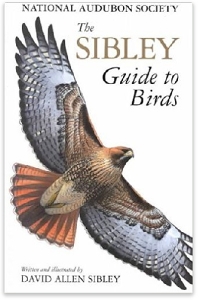What’s Up?
I will be without internet access from 8 AUG through late in the day on 22 AUG. There will be a brand new educational blog post every day in my absence. I toiled long and hard on August 6th and 7th to make that happen 🙂
Please call the office at 863-692-0906 on weekdays and speak to Jim and Jennifer about all things BAA Online Store- and IPT-related. And anything else that you might need help with or would like to chat about.
Please continue to patronize the BAA Online Store and to use my B&H affiliate links. Both are hugely appreciated.
with much love, artie
The Streak
Today marks twenty-one days in a row with a new educational blog post. This blog post took about two hours to create.
Booking.Com
I could not secure the lodging that I needed for the UK Puffins and Gannets IPT in Dunbar, Scotland, so I went from Hotels.Com to Booking.Com and was pleasantly surprised. I found the rooms that I needed with ease at a hotel that was not even on Hotels.Com, and it was a nice hotel that I had seen in person. And the rates were great. If you’d like to give Booking.Com a shot, click here and you will earn a $25 reward.
Thanks to the many who have already tried and used this great service.
Revamped
I finally updated the IPT page to properly reflect the recently completed trips. If you doubt that I am really slowing down do click here to see the meager IPT schedule. Right now there are only two US-based IPTs on the schedule. Best news is that I turned up the missing registrant for the Fort DeSoto IPT so that will run. Do consider joining us if you would like to learn from the best.
Photographers Wanted
If you would like to learn to be a better bird photographer, consider joining me on either the Fort DeSoto IPT in late September or the San Diego IPT in January, 2018. With just one person signed up, DeSoto will offer practically private instruction. And you can tack on the In-the-Field/Meet-up Workshop Session on the morning of Tuesday September 26, 2017 for free. Click here for IPT info and the current but abbreviated schedule.


Gear Questions and Advice
Too many folks attending BAA IPTs and dozens of folks whom I see in the field, and on BPN, are–out of ignorance–using the wrong gear especially when it comes to tripods and more especially, tripod heads… Please know that I am always glad to answer your gear questions via e-mail.
Please Don’t Forget …
As always–and folks have been doing a really great job for a long time now–please remember to use the BAA B&H links for your major and minor gear purchases. For best results, use one of our many product-specific links; after clicking on one of those you can continue shopping with all subsequent purchases invisibly tracked to BAA. Your doing so is always greatly appreciated. Please remember: web orders only. And please remember also that if you are shopping for items that we carry in the BAA Online Store (as noted in red at the close of this post below) we would of course appreciate your business.
|
|
|
This image was created in Iceland on July 21, 2017 by UK Puffins and Gannets IPT participant Tony Zielinski. He used the hand held Canon EF 100-400mm f/4.5-5.6L IS II USM lens (at 400mm) and the greatest value ever in a digital camera body, the Canon EOS 7D Mark II. ISO 800. Evaluative metering +2/3 stop: 1/500 sec. at f/7.1 in Manual mode. Cloudy WB. The center AF Point/AI Servo/Expand/Shutter button AF as originally framed was active at the moment of exposure. The selected AF point fell on the front of the bird’s breast. This image is a healthy crop from the original. Black-tailed Godwit, fresh juvenile, Iceland. Image courtesy of and copyright 2017: Tony Zielinski |
I Would Love to Find One of These at Jamaica Bay Wildlife Refuge … Heck, it would be possible.
There is at least one record of adult Black-tailed Godwit in the northeast. My late friend, bird photography inspiration, and shorebird ID mentor, Thomas H. Davis, once saw all four godwit species at Forsythe NWR (then Brigantine NWR) on a single day: Marbled, Hudsonian, Bar-tailed, and Black-tailed. Tom used to say, “If you live long enough all of the world’s migrant shorebirds will show up at the refuge (meaning Jamaica Bay Wildlife Refuge in Queens, NY). The following mega rarities have occurred at JBWR, most on the East Pond: Sharp-tailed Sandpiper, Little Stint, Red-necked Stint (then Rufous-necked Stint), and Broad-billed Sandpiper. In addition, the following rare species are seen once every few years: Curlew Sandpiper and Ruff.
Tom wound up hemi-plegic after suffering a cerebral aneurism in his doctor’s office at age 39. He was twice taken to the East Pond to try for his last lifebird and was successful on the second attempt when he saw New York State’s first-ever Rufous-necked Stint, the very bird that I had found and identified two weeks before. He died shortly after that at age 41 I believe.
Juvenile Shorebirds
Juvenile shorebirds, especially those in fresh plumage, i.e., really young birds about four weeks or less out of the nest, always exhibit neatly fringed feathers with rufous or buff edgings. This gives them a warm, evenly patterned look, just as seen on the bird in Tony’s image. The same is true of juvenile gulls and terns, and of juvenile raptors (to mention only a few bird families). Hey, the bill on Tony’s bird is not fully grown; in another six weeks it will be about 5-6 inches long, just like the bill of its parents. Actually, the adult males of this species have bills that average well shorter than the bills of the females. This is typical of most shorebirds. To learn more about aging and identify the shorebirds of North America, check out my Shorebirds, Beautiful Beachcombers here.
The Sibley Guide to Birds
When Tony asked me to ID the bird in his images, I first turned to my Sibley. I was not sure if the bird was a young bar-tailed Godwit or a young Black-tailed Godwit. The Sibley Guide enabled me to make an accurate ID simply by looking at his paintings and comparing the two. Simply put, this is the gold standard for identification guides to the birds of North America. I consult mine often. Sibley’s artwork is fantastic on its own, and paintings are alway more consistently accurate for ID purposes than photographs.
Shorebirds: An Identification Guide to the Waders of the World (in paperback): Prater, Hayman, & Marchant
This great and immensely detailed guide has been my shorebird bible since 1986. My hard copy is worn and frayed and the binding has come loose. This book is only for seriously addicted shorebird loonies like me. New and entry-level students are directed instead to my Shorebirds, Beautiful Beachcombers to learn the basics of identifying and aging North American shorebirds.
More e-mail conversations with Tony
TZ: Wow! Those 3 Whimbrel shots are fantastic.
am: They are my best in 34 years 🙂
TZ: They are way better than the ones i captured on a hike (hand-held at 400mm while walking, very cloudy day; unfortunately camera shake made them less-than-sharp, and standing while shooting made the background rather busy. Had I stopped and squatted or laid down i could have got some separation with the background as well as getting a steadier hand. See, I did learn something 🙂
am: Getting low is almost always a good plan.
TZ: And Thanks Artie, that is very kind of you to say. I really enjoyed meeting you too and spending time with you.
am: kind but true 🙂
TZ: Galapagos 2019 with my family, eh? That would be awesome. Give me time to get my wife on board (pun not intended). I am not sure if I mentioned this, but I gave my wife my backup camera (a 7D) for the Iceland trip and she discovered a real love of photography! And her trip pictures were quite good. My daughter is the bird lover, but so far not she is not interested much in photography. Anyway, I’ll be trying to get at least one of them interested in going to the Galapagos!
am: That would be beyond awesome.
(Note: I first heard from Tony in May of 2016 when he wrote asking for gear advice. He kindly used my B&H affiliate link to purchase the 100-400 II and the 7D II that I recommended. And as they say, the rest is history.)
If In Doubt
If in doubt about using the BAA B&H affiliate link correctly, you can always start your search by clicking here. Please note that the tracking is invisible. Please, however, remember to shoot me your receipt via e-mail.




Please Remember to use my Affiliate Links and to Visit the New BAA Online Store 🙂
To show your appreciation for my continuing efforts here, we ask, as always, that you get in the habit of using my B&H affiliate links on the right side of the blog for all of your photo and electronics purchases. Please check the availability of all photographic accessories in the New BIRDS AS ART Online Store, especially the Mongoose M3.6 tripod head, Wimberley lens plates, Delkin flash cards and accessories, and LensCoat stuff.
As always, we sell only what I have used, have tested, and can depend on. We will not sell you junk. We know what you need to make creating great images easy and fun. And please remember that I am always glad to answer your gear questions via e-mail.
I would of course appreciate your using our B&H affiliate links for all of your major gear, video, and electronic purchases. For the photographic stuff mentioned in the paragraph above, and for everything else in the new store, we, meaning BAA, would of course greatly appreciate your business. Here is a huge thank you to the many who have been using our links on a regular basis and those who will be visiting the New BIRDS AS ART Online Store as well.
Amazon.com
Those who prefer to support BAA by shopping with Amazon may use the logo link above.
Amazon Canada
Many kind folks from north of the border, eh, have e-mailed stating that they would love to help us out by using one of our affiliate links but that living in Canada and doing so presents numerous problems. Now, they can help us out by using our Amazon Canada affiliate link by starting their searches by clicking here.
Be sure to like and follow BAA on Facebook by clicking on the logo link upper right. Tanks a stack.
Typos
In all blog posts and Bulletins, feel free to e-mail or to leave a comment regarding any typos or errors. Just be right :).
















Dear Art,
Just read this. I have a 1DX 2 which has been cleaned once. Usually just do wildlife so don’t usually use wide angle lenses. But been out this am to shoot some dawn shots at 24mm and the dust in the left upper corner is horrendous. I wrote to canon UK about this last year and was made to feel it was my sloppy technique ( have had 5d and 7d for years with not a speck on their sensors). Its interesting to see haw many other folk are troubled and I suspect many other cameras are affected but since its primarily a sports and wildlife camera with very long lens usage the users don’t notice it. Has anything been done about it. As a PCS user i will be complaining again.
Welcome to the club …
with love, artie